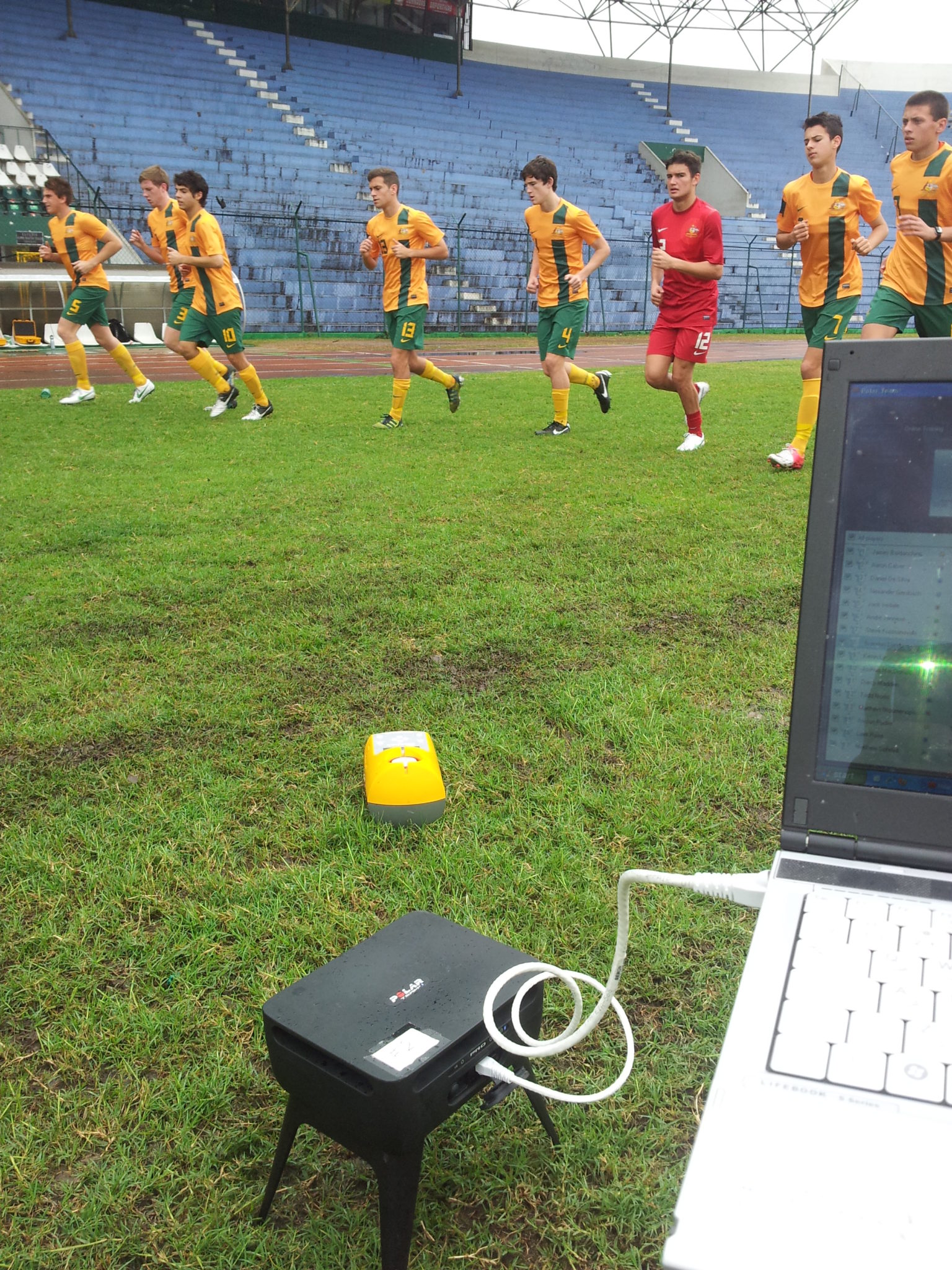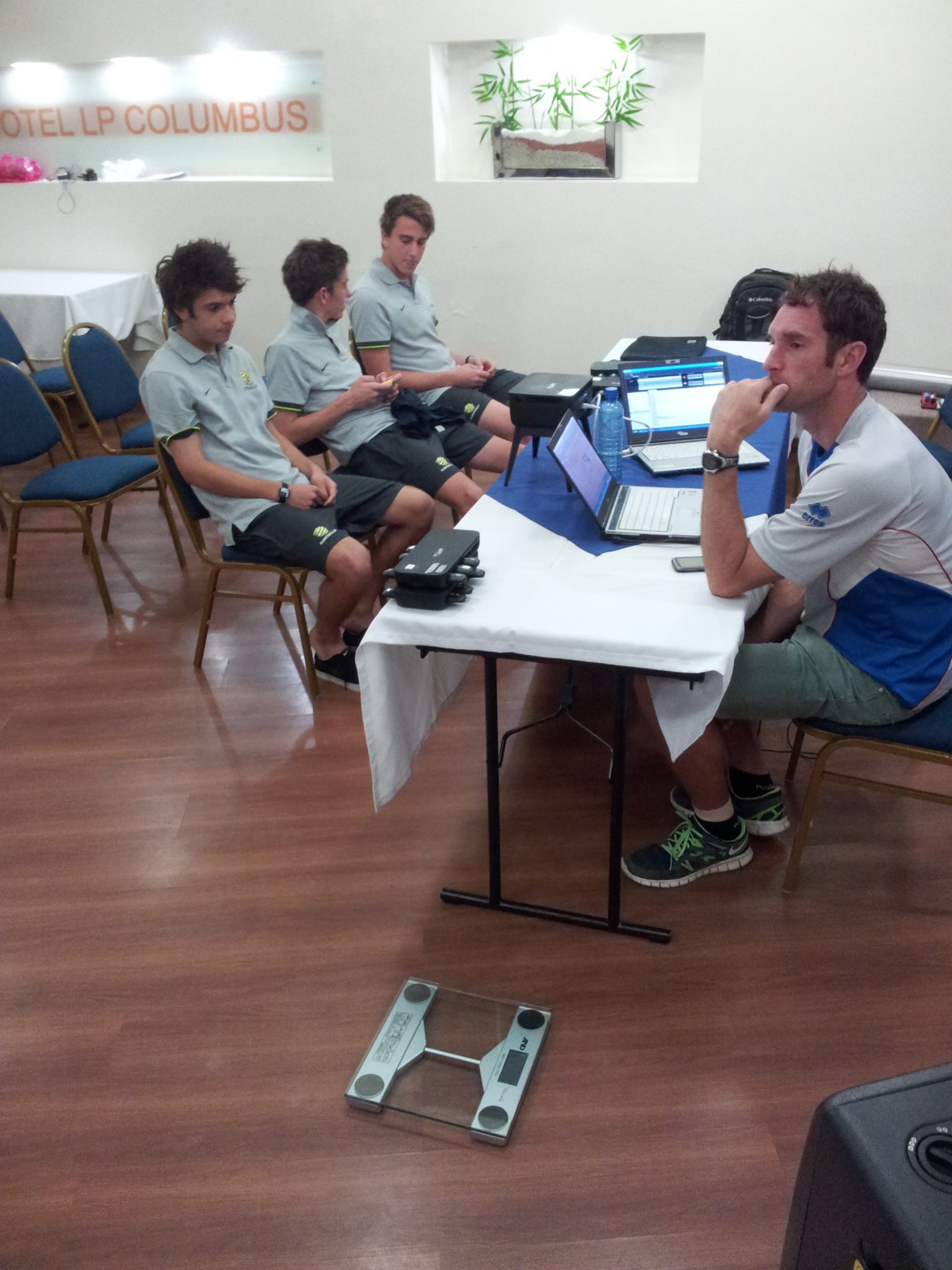Wellness, fatigue and physical performance acclimatisation to a 2-week soccer camp at 3600 m
Buchheit M, Ben M. Simpson, Laura A. Garvican-Lewis, Kristal Hammond, Marlen Kley, Walter F. Schmidt, Robert J. Aughey, Rudy Soria, Charli Sargent, Gregory D. Roach, Jesus C. Jimenez Claros, Nadine Wachsmuth, Christopher J. Gore and Pitre C. Bourdon. Wellness, fatigue and physical performance acclimatisation to a 2-week soccer camp at 3600 m (ISA3600). British J Sports Med, 2014, In press.
What is known on this subject
The decreased oxygen availability at high altitude impairs aerobic exercise capacity; conversely, single sprint performance is acutely improved.
- Psychometric and physiological measures, such as questionnaires or heart rate (HR) responses, can be used as indicators of acclimatisation to altitude.
- At least 2 weeks of acclimatisation at the altitude of competition is generally recommended before playing matches, but information on team sports is lacking.
What this study adds
Two weeks of acclimatisation at high-altitude is not long enough for native sea-level players to fully recover their high-intensity running performance, despite resting measures of HR, HR variability and wellness having returned to normal.
- A two-week altitude training camp may impair sprint performance, probably as a result of the inability to maintain an appropriate neuromuscular load during training and matches.
- The HR response to a submaximal running test can be used to estimate changes in high-intensity performance at altitude in native sea-level players.
ABSTRACT
Objectives. To examine the time-course of wellness, fatigue and performance during an altitude training camp (La Paz, 3600m) in two groups of either sea-level (Australian) or altitude (Bolivian) native young soccer players. Methods. Wellness and fatigue were assessed using questionnaires and resting heart rate (HR) and HR variability. Physical performance was assessed using HR responses to a submaximal run, a Yo-Yo Intermittent recovery test level 1 (Yo-YoIR1) and a 20-m sprint. Most measures were performed daily, with the exception of Yo-YoIR1 and 20-m sprints, which were performed near sea-level and on days 3 and 10 at altitude.
Results. Compared with near sea-level, Australians had moderate-to-large impairments in wellness and Yo-YoIR1 relative to the Bolivians upon arrival at altitude. The acclimatisation of most measures to altitude was substantially slower in Australians than Bolivians, with only Bolivians reaching near sea-level baseline high-intensity running by the end of the camp. Both teams had moderately impaired 20-m sprinting at the end of the camp. Exercise HR had large associations (r > 0.5-0.7) with changes in Yo-YoIR1 in both groups.
Conclusion. Despite partial physiological and perceptual acclimatisation, 2 weeks is insufficient for restoration of physical performance in young sea-level native soccer players. Because of the possible decrement in 20-m sprint time, a greater emphasis on speed training may be required during and after altitude training. The specific time-course of restoration for each variable suggests that they measure different aspects of acclimatisation to 3600m; they should therefore be used in combination to assess adaptation to altitude.





